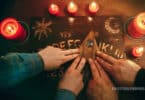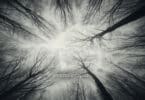The Salem Witch Trials are among the most infamous episodes of mass hysteria in early American history. In 1692, a wave of fear swept through the small, isolated community in Salem, Massachusetts, leading to the execution of twenty people and the imprisonment of many more. We know the stories of those accused, tried and punished well, but what about the animals living alongside these people? Remarkably, there is evidence that even animals—dogs, cats, birds, and more—were not immune from suspicion and paranoia during the witch trials.
A World Shaped by Fear, Folklore, and Beliefs
Life in the 17th century was fraught with uncertainty and hardship. Many in Salem saw the world as a battleground between the forces of good and evil, and every misfortune could easily be interpreted as the work of dark forces. Illness, crop failure, or personal disputes were sometimes rationalized as signs of witchcraft, and beliefs about supernatural threats were shaped by biblical passages that portrayed certain animals as lowly or symbols of impurity.
Although animals were essential in daily life, working as hunters, guards, or scavengers, they were not viewed with the same affection as modern pets. The fact that some creatures, like dogs and birds, were considered “unclean” or linked to misfortune in certain biblical passages meant that even a small sign of unusual behavior could be misinterpreted as something more sinister.
Animals, Superstition, and the Role of “Familiars”
European folklore, brought to the New World by settlers, often associated certain animals with witchcraft. In English folklore, animals like cats, toads, and sometimes dogs were believed to serve as “familiars”—supernatural creatures that witches supposedly used to carry out their will. Dogs, black cats, birds, and even pigs were sometimes suspected of helping witches or delivering curses. Black cats, for example, were considered bad omens, while dogs—especially black ones—were sometimes associated with death or dark magic.
In Salem, where fear and rumors ran high, it wasn’t just the accused people. Any animal close to a suspected witch or seen behaving “strangely” might be viewed with suspicion. Stories circulated of black dogs appearing near graveyards, cats following suspected witches, and birds perched ominously around accused homes. If an accused person owned an animal, it could easily be seen as an extension of their supposed “evil” influence.
Nightmares, Visions, and Animals Behaving Strangely
Dreams and nightmares were often seen as potential warnings or signs from the spiritual world. If a villager dreamed of being attacked by a dog, followed by a cat, or witnessed a bird circling their home, it might be taken as evidence that the animal was bewitched or serving as a witch’s familiar. In this tense atmosphere, animals displaying unusual behaviors—whether barking at night, wandering through the village, or even showing affection to a suspected person—could be interpreted as a supernatural warning.
Imagine the scene: a villager wakes from a nightmare where an animal known to belong to a suspected witch watches them from the shadows. By morning, the dream has spread through whispers, adding yet another layer of suspicion toward the accused and their animal companions.
The Case of the “Bewitched” Dog
One of the few documented incidents involving an animal during the trials centers on a dog that was accused of being bewitched. The dog, supposedly behaving strangely, became a scapegoat for the hysteria gripping the community. According to records, the dog was shot by fearful residents who believed this would halt the “curse” supposedly cast upon it. The specifics of the dog’s behavior remain unclear, but the fact that people reacted this way reveals how deeply fear ran.
In this era, it didn’t take much for something ordinary to be seen as malicious. Perhaps the dog barked at strange hours, wandered where it “shouldn’t,” or simply had an eerie look. In a time when animal behavior wasn’t well understood, any deviation from the norm could be twisted into an omen, and people were eager to connect their fears to something tangible.
A Supernatural Encounter with “Black Cats” and “Mysterious Birds”
Stories of black cats and dark birds, creatures associated with bad luck or witchcraft, circulated widely. Black cats were especially feared, believed to be linked to witchcraft or even to transform into spirits. Similarly, certain birds, like owls or crows, were thought to carry curses or mark someone for harm. Villagers claimed to see owls hovering near the homes of those accused of witchcraft, watching from rooftops or perching on graveyard fences. These creatures could be seen as signs of a curse or even agents of the Devil, heightening the fear around animals.
A Peculiar Precedent: Animal Trials in Europe
The notion of putting animals on trial wasn’t unique to Salem; in medieval and early modern Europe, animals were sometimes “tried” and “punished” for supposed crimes. From pigs to insects, animals had faced bizarre accusations, creating a peculiar precedent where even creatures could be suspected of wrongdoing. With this background, it’s perhaps less surprising that the villagers in Salem would see animals as possible participants in witchcraft, treating them with the same suspicion they did their neighbors.
The “Innocent” Verdict for a Dog
One documented incident reveals a surprising outcome: a dog accused of witchcraft was ultimately found innocent. This unexpected verdict suggests that while the trials were marked by intense fear, not everyone agreed with each accusation. There may have been an undercurrent of common sense or even compassion toward animals, hinting that not all were completely swayed by the hysteria.
The “Curse” of Condemned Animals
The trials didn’t end with those condemned alone. A final eerie twist involves believing in curses tied to animals connected to those accused. Some believed that any animal loyal to an accused witch could carry curses beyond death. If an animal was connected to the condemned or had shown protective behavior, villagers might fear that it, too, could carry an ill omen or a “curse” that haunted them afterward.
Why Target All Animals?
In 1692 Salem, animals were an essential part of life. They were valued for their practical uses, whether as hunters, guards, or mousers. But the biblical and folkloric associations with impurity and misfortune meant that if any creature behaved strangely or was linked to a suspected witch, it could easily be swept into the same wave of suspicion. A loyal dog’s bark, a wandering cat, or a bird’s cry might be seen as signs or messages from dark forces.
Reflections on Hysteria and Innocence
The Salem Witch Trials are a cautionary tale about the dangers of unchecked fear and the cost of hysteria. While the tragedy of human lives lost and ruined during the trials takes center stage, the stories of animals caught in the whirlwind add a unique layer to the narrative. Dogs, cats, birds, and other creatures, often innocent bystanders in the lives of those accused, reveal just how deeply paranoia seeped into every aspect of life in Salem.
In the end, the Salem Witch Trials teach us that when fear takes hold, even the innocent—whether human or animal—are at risk. They remind us of the value of reason and mercy, which extend even toward creatures that can’t speak for themselves.
Learn More:
The Salem Witch Trials: A Day-by-Day Chronicle of a Community Under Siege by Marilynne K. Roach
Roach’s book includes specific cases and details about the events of the trials, and while its focus is on the timeline and individuals involved, it does mention instances where animals were implicated, reflecting the period’s suspicions about “familiars” or animals linked to witches.
In the Devil’s Snare: The Salem Witchcraft Crisis of 1692 by Mary Beth Norton
Norton explores the broader context of the trials, including beliefs around witchcraft and how certain animals were thought to serve as familiars. She also examines the influence of European folklore, which brought these animal-related superstitions to New England, helping readers understand why animals were viewed with suspicion.
A Storm of Witchcraft: The Salem Trials and the American Experience by Emerson W. Baker
Baker’s work doesn’t focus specifically on animals but does touch on the general superstitions of the time, including the role of familiars in Puritan beliefs. He explores how these beliefs were carried over from European traditions, making it a useful read for understanding the broader superstitions about animals.
The Witches: Salem, 1692 by Stacy Schiff
Schiff vividly describes the fear that gripped Salem and references the types of animals (like dogs and cats) that were sometimes implicated. This book also explores how animals tied to suspects were viewed as extensions of their supposed dark powers.
Witchcraft and Magic in Europe: The Period of the Witch Trials by Bengt Ankarloo and Stuart Clark
This book provides context on how animals were involved in European witch trials. It covers the concept of familiars and how animals were sometimes put on trial or punished as part of witchcraft accusations, making it especially useful for understanding where the Puritans’ beliefs came from.





